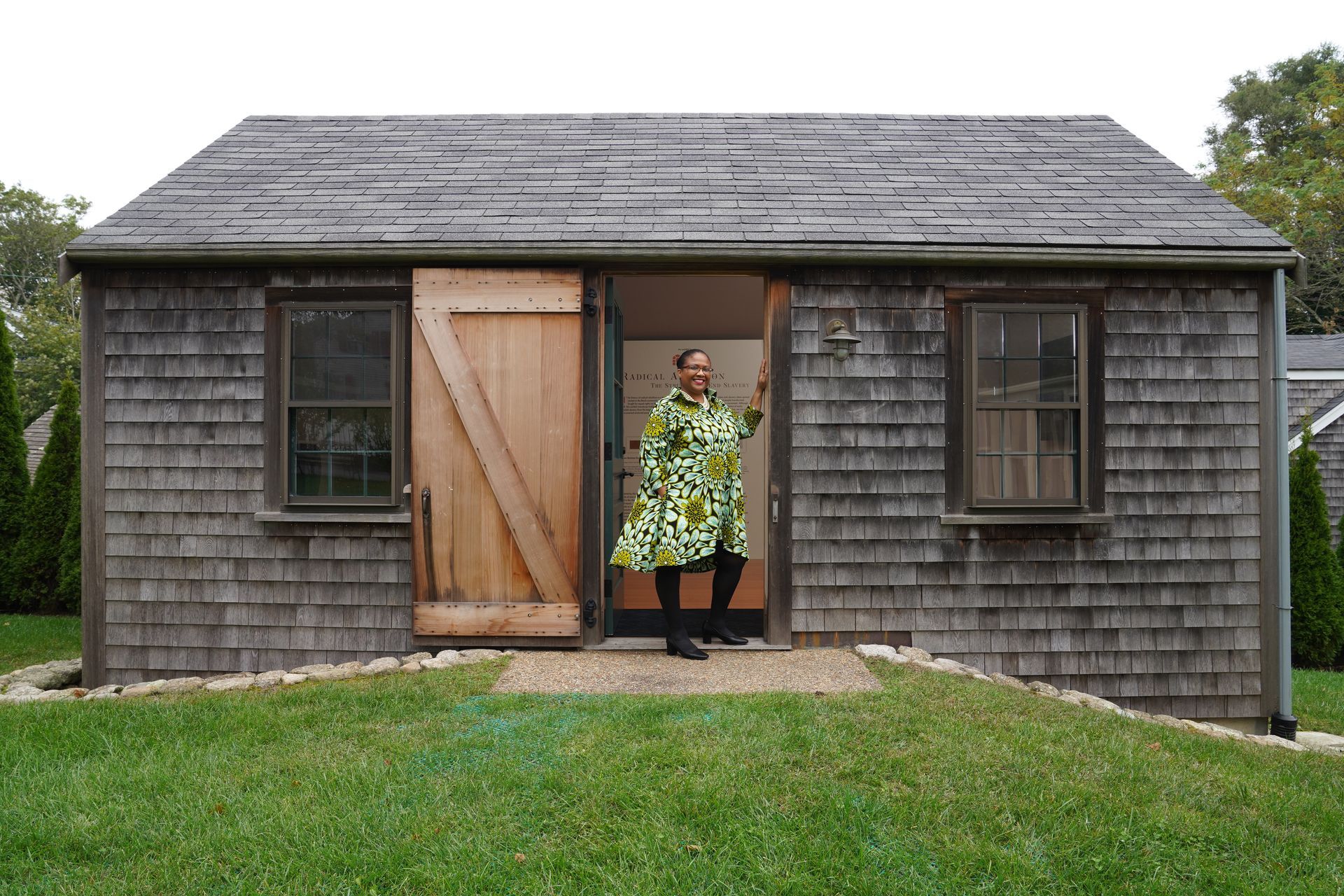Throwing Caution to the Wind
Will Nantucket sue Vineyard Wind?
Written by Brian Bushard
Photography by Kit Noble
Gaven Norton was one of the first people to see the little green pieces of Styrofoam as they started washing up at Nobadeer Beach. It was the early morning, before Norton typically opens his surf school. Out on the beach and in the water, he saw what looked at first like massive hunks of seaweed, like a red tide approaching the shoreline. “I was one of the first people to see it, just piles and piles of green debris,” Norton said. “I was walking down the beach, throwing the stuff up the beach and realized it was an uphill battle.”
Norton, the owner of ACK Surf School, directed his staff to avoid the shards in the water when he saw perhaps one of the biggest pieces, a 20-foot shard of fiberglass. It wasn’t long after that lifeguards shutdown the beach to swimming, which meant Norton would have to close up shop—on one of the busiest weeks of the summer. “I was shut down for three days, but there was a prolonged effect of people seeing the story and they didn’t show up to lessons because they’re hearing it’s extremely dangerous to swim on the south shore,” he said.
It’s been just over a year since Vineyard Wind’s blade failure littered Nantucket’s beaches with thousands of pieces of green Styrofoam and fiberglass shards. In some ways, the story has been resolved. Beaches from Madaket to Sconset have been cleaned for months, and Norton’s surf school is back to operating in full swing. The town has even agreed toa $10.5 million settlement with GE Vernova, a $150 billion company that manufactured the turbine blades, as compensation for the blade failure. (The settlement also absolved Vineyard Wind from responsibility for the blade break.)
But even as Nantucket’s South Shore returns to normal, some key questions remain unanswered, and islanders are pressing Vineyard Wind for answers—and asking the town to do more about it.
“Now what’s happened is we’ve settled with GE Vernova for a relative pittance, and the worst part is that it indemnifies Vineyard Wind, who gave us zero and didn’t even talk with us. They got away scot-free, so does anybody really think it was a good deal? It was a crime,” said Amy DiSibio, a board member of ACK for Whales, a Nantucket Group opposed to Vineyard Wind. “We’ve asked the Select Board a thousand times to join us in a lawsuit and they don’t have to pay, but they don’t listen,” she added. “When there is opposition and the squeaky wheels are squeaky enough, then stuff happens. Can you think of a squeakier wheel than Nantucket?"

While the Select Board has not sued Vineyard Wind directly, they have increasingly called out the company in public forums. When Vineyard Wind did not sign the $10.5 million settlement, town officials stated they found Vineyard Wind “wanting in terms of its leadership, accountability, transparency, and stewardship in the aftermath of the blade failure and determined that it would not accept Vineyard Wind as a signatory to the settlement.”
Just two weeks after that settlement, the Nantucket Select Board laid into Vineyard Wind even harder during a press conference, sending the company a list of demands, including communication of all emergencies to town officials, regular project updates, and a $10 million escrow fund to cover any potential future cleanup costs. “When confronted about these failures ,Vineyard Wind has pointed a finger at everyone but themselves,” Select Board member Brooke Mohr said. “They even blame Nantucket and the ocean. That is not leadership. Nantucket provided Vineyard Wind with half a dozen opportunities to adopt protocols for greater accountability, and they have failed to step up.”
Select Board member Dawn Hill did not rule out a potential suit against Vineyard Wind, though other members of the Select Board have not seemed as inclined to take up legal action. The town could also exit the $16 million so-called Good Neighbor Agreement it signed with Vineyard Wind in 2021, which provided mitigation funding for historic, cultural and economic impacts from the wind farm in exchange for public support of the project. One co-signor, the Maria Mitchell Association, dropped out of that agreement last year, while over 2,000 islanders have signed a petition calling on the town to withdraw from the deal, as well. But exiting that agreement seems unlikely. Select Board members argue it’s the town’s primary legal tool if it ultimately chooses to sue.
"The value of the [Good Neighbor Agreement] has been a hotly debated topic in our community,” Mohr said in a statement in July. “At this time, we believe that withdrawal from the [Good Neighbor Agreement] would actually weaken our town’s position in terms of making these assertions and demands to Vineyard Wind today, and keeping the [Good Neighbor Agreement] in place for the moment is the most effective legal tool we have, and we believe that walking away from this agreement would prove to be a symbolic gesture only.”
In July, Vineyard Wind, for its part, turned on its ADLS lighting system, which flashes red lights only when airplanes are in the vicinity, and said it would resume “traditional communications and coordination with the town in a manner that supports a productive dialogue.” But even with those assurances, ACK for Whales is not convinced the Select Board has done enough.
“We get no benefit from this, we’re bearing a heavy brunt, and yet the Select Board says we have to support an industry,” DiSibio said. “We don’t support industries that are owned by foreign energy companies. Our job is to take care of what is best for this island.”
Vineyard Wind did not return a request for comment. Hill—who has lambasted the project over its visual and environmental impacts—said she is still waiting to see if Vineyard Wind will hold up its end of the bargain on multiple other demands from the board, though she’s not optimistic. “If they meet the lists of demands and it’s satisfactory and they stay within the Good Neighbor Agreement, I believe that will satisfy the majority of the board,” Hill said. “But I’m not confident [in Vineyard Wind]. The visual impact of this project is still greater than what I anticipated, and if I could go back I would have pushed harder in the beginning to make sure that these were farther away. It’s difficult. Vineyard Wind has been permitted and we are trying to work within the parameters of where we’re at.”
The jury is still out on legal action against Vineyard Wind—or any of the other wind farms with federal lease sites down the Eastern Seaboard. ACK for Whales has taken its challenge of the project all the way to the Supreme Court, though the high court declined to hear the case. Other groups have sued over the federal approval of offshore wind farms, including in Maryland and New Jersey, with mixed success. A 200-turbine wind farm off Cape May, New Jersey, has been halted following legal action and the erasure of a massive investment into the project. Officials in Ocean City, Maryland, have sued the federal agency that approved another wind farm off the Maryland coast.
Many state and federal officials, meanwhile, have maintained strong support for offshore wind as an alternative energy source to greenhouse gases. According to Vineyard Wind, the 800-megawatt offshore project has the capacity to generate energy for more than 400,000 homes and businesses in the state, reducing carbon emissions by an estimated 1.6 million tons per year—part of a Biden administration goal of creating 30 gigawatts of offshore wind energy by 2030. With the Pilgrim Nuclear Power Plant decommissioned, state officials on Beacon Hill are also exploring the possibility of purchasing natural gas or importing hydropower from Canada—though it’s become a potentially volatile option in the ongoing trade war. The status quo has also been expensive—as of April, Massachusetts consumers pay the fourth highest price for electricity in the country (30.65 cents per kilowatt hour), behind only Hawaii, Connecticut and California.
State Sen. Julian Cyr, who represents Nantucket, has called on Vineyard Wind for greater transparency and accountability after the blade failure, though he cautioned against abandoning offshore wind altogether. In a statement in July, he said he remains a “strong supporter of our transition to renewable energy, and offshore wind is a key part of the commonwealth’s broader strategy to lower energy costs and power our future responsibly. For the coastal communities where I live and represent, that transition is urgent and essential—rising seas are already flooding our downtowns and waterfronts. Yet that transition must occur in sustained partnership with the communities that host renewable energy projects. Nantucket deserves clear answers, better communication, and a seat at the table with this and every offshore project that impacts the island.”






